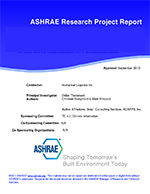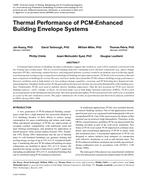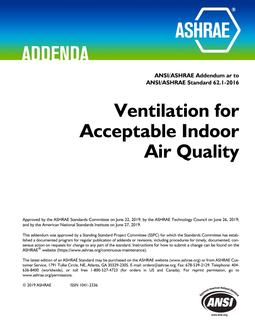Click here to purchase
The Predicted Mean Vote (PMV) model, recommended by ASHRAE Standard 55 for measuring thermal comfort, uses six variables to calculatethermal comfort: temperature, air velocity, relative humidity, mean radiant temperature, metabolic rates, and clothing insulation values. These variables cantake on a wide range of values, introducing uncertainty for the system designer who aims to provide thermal comfort to the occupants within a thermal zone.This work quantitatively identifies the most influential variables in the Predicted Mean Vote model under a variety of conditions. We use Monte Carlosimulations to perform a global sensitivity analysis of the six variables in the Predicted Mean Vote model, with probability distributions rather thandeterministic values assigned for the both the variables controlled by the HVAC system (temperature, air velocity, relative humidity and radianttemperature) and those that are not (metabolic rates and clothing insulation). Sensitivity analyses performed on the PMV model using other methodssuggest that metabolic rate and clothing insulation are highly influential in the PMV equation and require measured values. In this study, we investigatethe sensitivity of PMV to these factors in a variety of ambient conditions. Using the probability distributions for metabolic rate, we also quantify the risk ofan office building not conforming to ASHRAE Standard 55 while still aligning with the acceptable operative temperature limits as mentioned inASHRAE Standard 55. We also quantify the risk of discomfort due to variations in metabolic rates in these case studies. These results are used to makerecommendations for the level of detail needed in measuring metabolic rates, based on ASHRAE Standard 55.
Citation: 2019 Winter Conference, Atlanta, GA, Conference Papers
Product Details
- Published:
- 2019
- Number of Pages:
- 8
- Units of Measure:
- Dual
- File Size:
- 1 file , 1.2 MB
- Product Code(s):
- D-AT-19-C021


